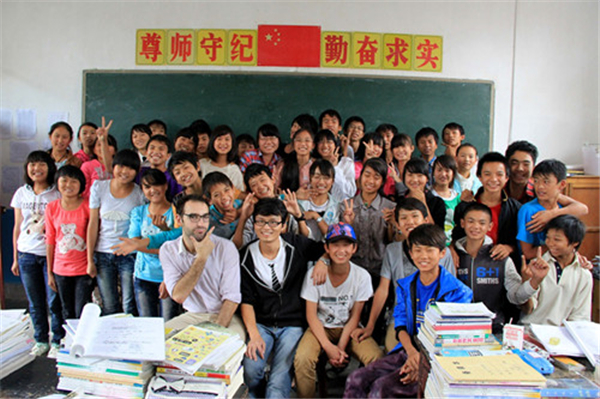The social enterprise empowering students in Yunnan
 |
|
Andrew Shirman, founder of the nonprofit organization Education In Sight, smiles for the camera with a middle school class in Yunnan province. [Photo provided to China Daily] |
Li's school disappearance acted as a catalyst for Shirman to set up Education in Sight (EIS) in the spring of 2012. EIS's twofold mission is to correct students' eyesight in underdeveloped communities by providing free vision screenings and eyeglasses, and educate to ensure long term benefit.
The Beijing-based nonprofit has, since 2012, screened over 116,000 students and delivered more than 16,700 free pairs of eyeglasses, according to its website.
With financial donations from friends, associates and fellow TFC alum, Shirman set out to seek the guidance of optometrists in the nearest city to his school in Yunnan. With the help of Dr. Peng, who agreed to offer his expertise for the cost of transportation, the pair began offering eye exams to students class by class.
Two weeks after the initial eye examinations, EIS provided its first shipment of glasses. Astonishingly, 20 percent of students in Shirman's class alone had been in dire need of prescription lenses.
"The change is immediate in what the performance looks like in these kids," said Shirman, speaking to City Weekend. "If you give them glasses, their grades skyrocket."
The result was the same in the classrooms of other TFC teachers, like Sam Waldo, who teamed up with Shirman to work as EIS's Chief Development Officer. Of Waldo's 50-some students, 14 received glasses through EIS.
Waldo noticed the change in his students immediately, especially one in particular. "I could see the wheels turning in his head, but it just wasn't showing up in his test scores," said Waldo in an interview with City Weekend. "Imagine you're trying to learn English and you're in a haze, in a fog, and then it just clears."
Gifting the children eyeglasses solved only part of the problem, however. Many of them were blissfully unaware of their desperate need for a prescription, while others were reluctant to ask their impoverished parents for glasses. When the team checked into the schools a year later, they discovered that many students had stopped wearing their glasses.

























